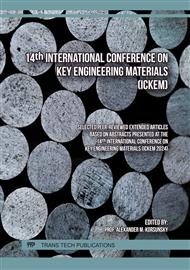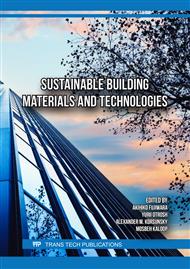p.3
p.11
p.17
p.25
p.33
p.45
p.53
p.61
Experimental Evaluation of Adobe Bricks Reinforced with Rice Husk, Lime and Neem Fibers for the Construction of Sustainable Housing in Andean Areas
Abstract:
Adobe homes are prone to natural phenomena such as floods, landslides, and earthquakes, due to the intense rains that occur from the month of November to March. This study aimed to investigate the mechanical properties of adobes reinforced with rice husk, lime and neem fibers and evaluate their compressive strength and water absorption capacity. The tests were carried out on adobes with dimensions of 10×10×10 cm3 made with earth, 0.75% rice husk, 0.75% lime and 1 to 3% neem fibers of the total weight of the adobe to determine the evaluations of the specimen. Therefore, a visit was made to the study area located in the province of Yauyos - Peru to classify the type of soil that would be used in the samples, then sift the soil to prepare the mud and let it rest for 24 hours. Then, incorporate the reinforcements and mold the adobes to let them dry for 28 days and proceed with the tests. The research recorded an improvement of 39 and 68% respectively on the strength of adobes reinforced only with rice husk and lime; and neem fibers after 28 days of drying with a proportion of 0.75% rice husk, 0.75% lime and 3% neem fibers. The absorption coefficient of adobes reinforced with rice husk, lime and neem fibers are between 16 and 27% better than adobes reinforced separately. Finally, this research will reduce the damage to homes caused by rains through the use of materials found in the localities and reduce pollution, thus creating a sustainable home with low costs for the inhabitants.
Info:
Periodical:
Pages:
11-16
Citation:
Online since:
August 2024
Price:
Сopyright:
© 2024 Trans Tech Publications Ltd. All Rights Reserved
Share:
Citation:



